When looking at Stephen Shore’s photographs for the first time, I suspect the reaction of most people (and I include myself in this group) would be some variation of WTF? For a lot of folks, that’s also the second and third reaction, and for many it’s their final view. Really, WTF?
It’s a perfectly understandable reaction. Shore, not surprisingly, encounters it often. He has described a conversation he had with another artist—a potter: She said to him, “I just don’t know where to begin to look, I don’t know how to begin to look at a photograph. I don’t get what you’re doing.” Shore’s had a lot of time to think about this sort of reaction. “She might see a picture in a newspaper and recognize the content,” Shore said, “[S]he knows that there’s something else that the artists are thinking about, but she just doesn’t know what that is.”
And that’s at the heart of the WTF? response, isn’t it? We assume—or at least we want to assume—that fine arts photographers are thinking about something. Something deliberate, something definite. We just don’t understand what, or why.
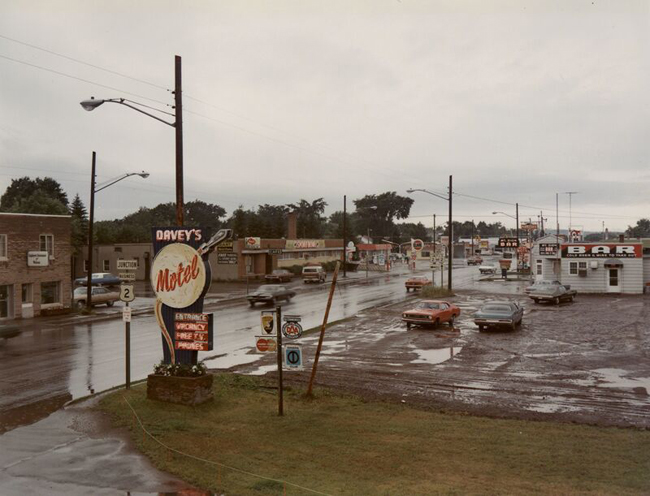
Shore was born in Manhattan in 1947, and apparently had a relatively privileged childhood. He showed an interest in photography when he was very young. That interest was encouraged. When he was six years old an uncle gave him everything he needed to set up a darkroom. At age nine he shifted to a 35mm camera and began experimenting with color film. A year later he was given a copy of American Photographs, the book produced by Walker Evans after his 1938 show at the Museum of Modern Art (the first solo show by a photographer in MoMA history).
When he was 14 years old, Shore had the audacity to present his photographs to Edward Steichen, who at that time was the curator of MoMA. Steichen bought three of the photos. Let me just repeat that. The kid was only 14 years old and he sold three photos to the Edward Fucking Steichen. At 17, Shore met Andy Warhol and began to hang out in Warhol’s studio—The Factory—photographing the people he met there. He provided the light shows for the Velvet Underground. In 1971, when Shore was not quite 24, he returned to MoMA and became the second photographer in MoMA history to have a solo show.
The show at MoMA made him worry. He told a reporter that having achieved such a major show at such a young age left him unsure what he’d do next.
What Shore did next was take to the road. He spent most the rest of that decade wandering America. You’ll note, I hope, that I generally refer to this nation as the US; but in this case, ‘America’ is more accurate. Shore was exploring the concept of America as much as he was touring the nation itself. He wasn’t the first to do that, of course. But he was among the first to do it self-consciously, to treat ‘America’ as a concept rather than a location. And he did it in color.
This was still a time period in which color was considered appropriate for commercial photography and, to some extent, for journalism—but art? No, thank you, not art. A few photographers were doing street photography in color, but that was about it. As Shore looked at the quiet streets of Amarillo, Texas, he began to think about color. Over the next few years he and William Eggleston introduced color imagery to the world of art photography.
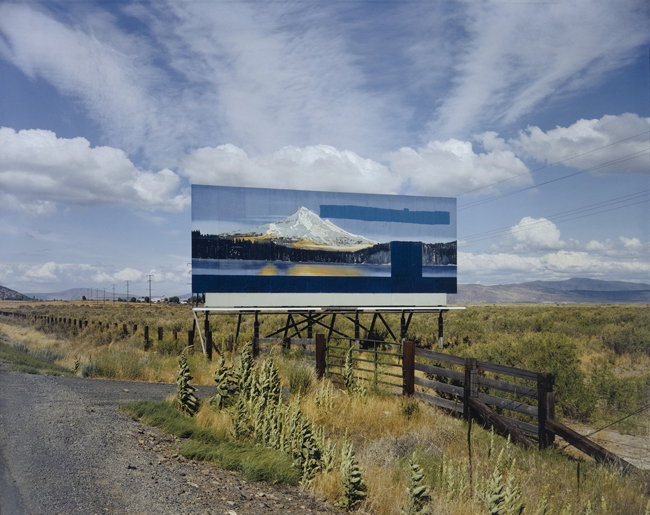
Although both Shore and Eggleston turned their respective lenses on subject matter that could be called mundane or banal, they did it for different reasons and based on different underlying principles. Eggleston, of course, was interested in what he called the “democratic camera,” the notion that everything is equally worthy of being photographed, that nothing in the frame is more important or less important than anything else. Shore, on the other hand, was exploring the idea that everything in the frame has meaning.
He began using a 35mm camera. As his approach solidified in his mind, Shore shifted to a 4×5 large format camera—the size of the negative would give him more clarity throughout the frame. With that in mind, it’s not surprising he eventual settled on an 8×10 view camera.
Although the larger negative gave him the clarity he wanted, there were some significant drawbacks to using such a large camera. It required a tripod, of course, which meant sacrificing a certain level of spontaneity. After setting up the tripod and affixing the camera to it comes the task of focusing through the ground glass. And the process was expensive. Shore estimated it cost him US$15 for every negative he shot—the film, the processing, and a contact print. That was a sizable amount of money for a young man on the road in the 1970s.
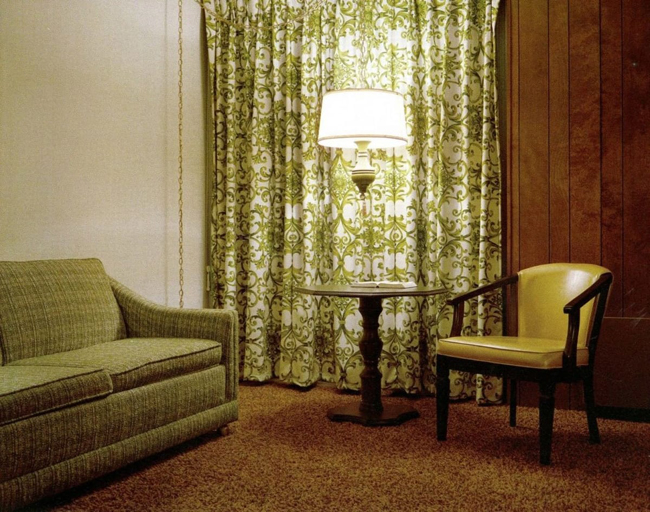
“Simple economy lead me to only take one exposure of a subject. I knew I couldn’t economize by only taking pictures that I knew would be good – that would simply lead to boring, safe images. But I could decide what I really wanted to photograph and how I wanted to structure the picture. This was a powerful learning experience.”
Shore continues this practice, by the way, even though he now occasionally shoots digital (he owns a Nikon D3x). “After using an 8×10 for almost 30 years, I find I think in 8×10 terms,” he said. “I take only one picture of a subject, even with a digital camera, unless I’m photographing something that is in motion or changing.”
Shore says his work deals with what he calls “the visual grammar of photography.” The photographer’s personality and vision are expressed by the choices and decisions made before the photograph is shot, displayed through the tools used.
“[T]here is something arbitrary about the decision making that a photographer engages in. What I mean by that is this: I can get out of the car and stand by the edge of the highway and take a picture that looks like a totally natural landscape, untouched by the hand of man. I could move back six inches and include the guardrail in the picture and the meaning of the picture changes dramatically.”
The meaning of a photograph, then, is determined entirely by the photographer, not by the subject matter, not by the viewer. For Shore, the photographs he made during this period aren’t images of anonymous, mundane moments—rather they’re moments densely packed with a rich variety of details.
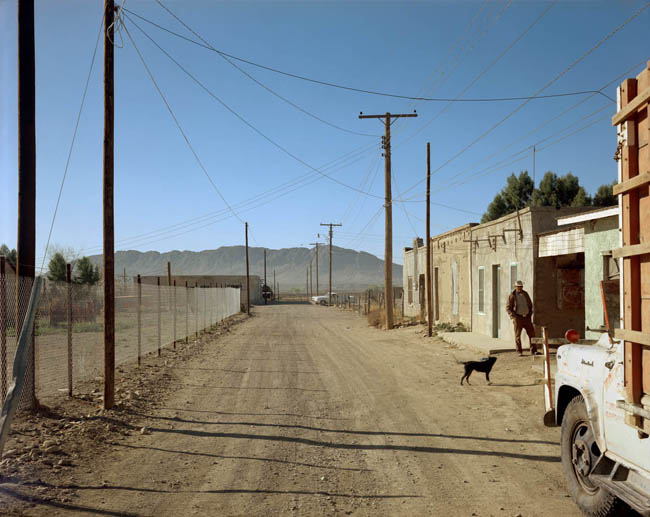
The question at the heart of all Shore’s photos has to be this: why? Why this moment and not the next? Why that spot rather than ten feet over? Why this angle, why that traffic signal or that road or this stack of pancakes? Why choose this particular scene?
The photographs themselves suggest these decisions may seem arbitrary and idiosyncratic, because that’s how humans frame their world. At some level we’re always deciding what to pay attention to and what to ignore. For example, as you read this, life is going on around you, most of which you’re disregarding. It doesn’t mean those things you’re ignoring aren’t important; it simply means you’ve adjusted your concentration to temporarily overlook them.
One tenet of conceptual art is that the concept—the idea—trumps aesthetic concerns. If Shore’s photographs don’t fit the traditional aesthetic of art photography, he doesn’t mind—because he’s not interested in ‘pretty.’ “My tendency,” he says, “is if I see something interesting, to not take a picture of it, but to take a picture of something else and have that [interesting thing] in it so that you can move your attention around, like this is a little world that you can examine.“
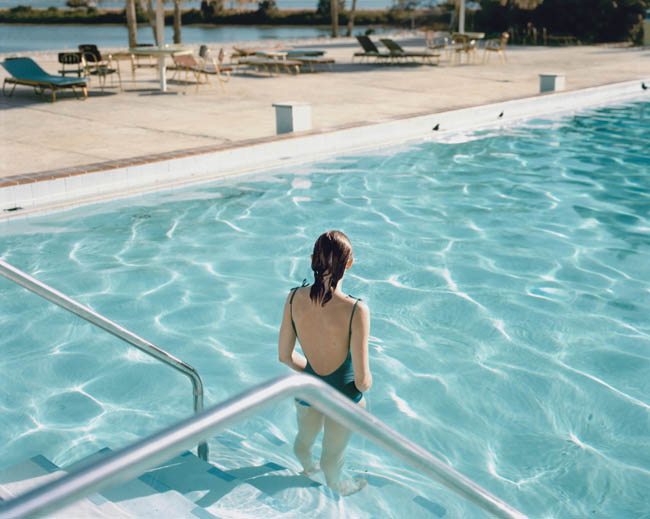
Shore’s ‘little worlds’ have a passionate audience. He recently related an incident in which he was using his 8×10 view camera in Manhattan and was approached by an NYPD officer. They began talking about cameras (the officer owned a 4×5 camera). “[A]t one point he asks my name, and I tell him, and he says, ‘I have your book. I show it to my family and they think your pictures are boring, but I tell them they don’t understand.’” After they’d talked for a while, the officer proved he did, in fact, understand. “So where I’m photographing the people walking by, there’s a car that’s double parked at a slight angle. While we’re talking the guy is about to get in the car and the policeman says, ‘Do you want me to stop him?’ He’s not even thinking about ticketing the guy! He just knows the car fulfills a structural need in the frame!“
That’s the key, I think, to understanding—if not actually appreciating—the work of Stephen Shore. Everything in the frame is something he’s consciously decided belongs in the frame.
“[O]ne of the bigger problems of people starting photography is that they’re thinking of photography as pointing and not framing, so they’re looking at an object and their field of perception kind of dissipates as it gets to the edge, like the way a rock song fades out.”
He argues that failing to note what’s at the edge of the frame is an abdication of the photographer’s responsibility. “It’s avoiding the decisiveness of saying ‘Here’s the last note.’ In a photograph, there is always a last note.”
And there it is. If you look at a photograph by Stephen Shore and ask yourself WTF?, it’s because you haven’t yet found the last note. Keep looking.
